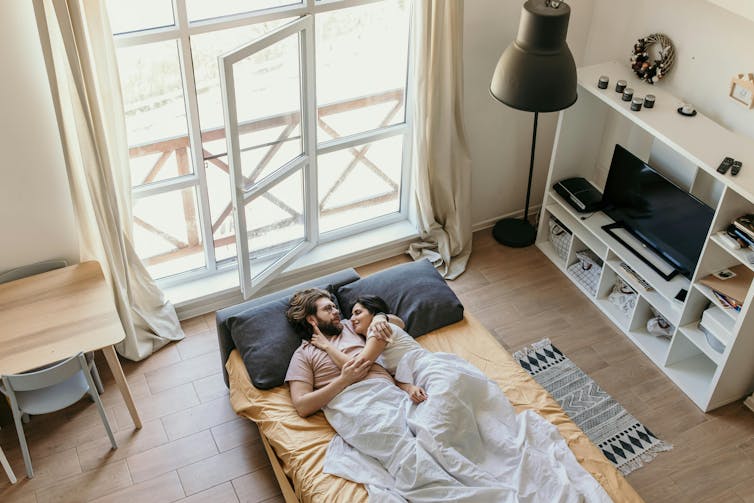During this summer of tennis, it’s a great time to reflect on important pioneering tennis enthusiasts who contributed to the social and cultural landscape of our healthy, smart, creative region.
A type of tennis has been played for centuries but it wasn’t until the development of the wooden racquet, strung with animal gut, and a more functional tennis ball, that tennis became a very popular sport that anyone could play.
It is unknown exactly when tennis commenced on the Sunshine Coast, however it was reported in the Moreton Mail on October 22, 1896, that two magic lantern entertainments were played in the School of Arts by Mr R. Pettigrew to a large attendance.
The proceeds from the night were donated to the School of Arts and Lawn Tennis Club.
In November 1903, a successful and very enjoyable social was held under the auspices of the Nambour Lawn Tennis Club in the Winterford’s Hall.
When the dance closed at 2am, the dancers were perfectly satisfied with the night’s enjoyment. Entertainment was provided by Messrs P and J Carroll (violin), CF Burke (accordion) and Miss D Hore (piano).
These social activities were important events that provided the opportunity for communities to come together and socialise. It was common for people to drive or ride long distances to attend.
In September 1908, the Buderim Mountaineer Tennis Club hosted the Woombye Tennis Club in a gala day with the games being well contested, very tough and close.
Woombye was the victor on the day but a rematch was planned for three weeks later.
Early tennis gatherings were on courts carved out on private land.
There was a report in 1908 of a sporting event which took place in Mr Henry Dyer’s paddock at Landsborough.
Later, Mr Dyer was reported as the owner of a tennis court which became the hub for social tennis in Landsborough.
In the 1920s, the Caversham (Landsborough) Tennis Club was formed.
Although these fledgling clubs were self-funded, they also supported other organisations with their fundraising.
In December 1921, the Caversham Tennis Club held a well patronised social for the Christmas Tree Fund for the Children’s Hospital, the takings were £6/7s/3p.
Preparing the court was a skill. The Hillview Tennis Club members played at the Glenview State School tennis court which was hard sandstone and marked out using lengths of twine and lime poured carefully from a can or an old kettle.
Following the end of World War I, tennis experienced an accelerated expansion on the coast and hinterland, with new clubs forming and new courts built.
The social fabric of the region, which was so fractured during the war, began to rebuild.
The Caloundra Tennis Club put forward a proposal to council to lease a piece of land near the bathing beach and in 1927 the public tennis courts located near Kings Grand Central Guest House at Kings Beach, Caloundra were opened.
A public meeting was held in 1930 to form the South End Caloundra Tennis Club.
The elected president was Mrs E J Clarke, secretary Mrs A Baldwin and treasurer Miss Flemming.
Tennis would be played at a court on Miss Flemming’s property. Interestingly, many women were executives of tennis clubs at that time.
In 1928 the Caloundra Tennis Club held a successful fancy dress ball to raise funds for the club.
The music was provided by Jasserino band. The winners of best dressed couple was Mr J Clarke and Miss D Clarke, as an “Indian chief and squaw”. The best ladies costume winner was Mrs W Westaway as “danger signals”, and the best novelty costume winner was Mr Granville Parker as a “baby”.
The Maleny and District Tennis Association was formed in 1928 to advance and foster tennis.
Not only did the association accomplish this but the impact on the social and cultural patterns of the region was remarkable.
Not only those associated with tennis but the wider community became involved in many dances, balls, fundraising activities, BBQs and working bees.
There was rarely an excuse not to have a knees up and popularity of an event was judged by the distance travelled between home and the venue on horseback.
This idea of forming an association flowed on to other areas with the Central Coast Tennis Association and the Blackall Range Tennis Association being founded.
Not all social events were in community halls, members also opened their homes for social gatherings.
Reported in 1935, Mr and Mrs Wolfenden from the North Maleny Tennis Club lent their home to the Ellerslie Tennis Club for a night of games and dancing.
All of the social events were reported in great detail at the time by the Nambour Chronicle.
One such report in 1937 on a Maroochy District Tennis Association ball included a detailed description of the frocks worn by the ladies.
Mrs Jessup in a green figured silk linen, Mrs K Burgess in blue figured satin, Mrs A Broad wore cream magnolia satin and so on.
Over the years there have been many stories about player antics.
Jack Wilcox in his book Maleny Memories thru the lens of tennis, tells the story of Ned Lamb who had the theory that when you get out of bed, you disrobe your warm clothes to put on cold ones, so he would turn up to tennis matches with his pyjamas under his tennis gear and after playing a few games would remove the pyjamas.
Bella Vieritz, who was a three-time ladies champion, was noted for wearing her tennis outfit to church.
The Nambour Tennis Club made history in 1929 when it hosted the Queensland Hardcourt Championships over three days.
Leading Brisbane and local players competed in the singles, gents, mixed doubles and junior fixtures.
One reported match played between Mr V Westacott and Mr Edgar Perren, the North Coast champion, provided some brilliant tennis.
Unfortunately, Mr Westacott though having a terrific serve, failed tremendously in his returns and his consistency was erratic.
His forehand drives, his principal means of attack, were accepted quite comfortably by Mr. Perren’s backhand.
It was reported at this time that there were more than 500 players in the Maroochy district.
Tennis has certainly changed over time. Associated social events are no longer part of the game, but in its pioneering days it was the one sporting activity that the whole family could participate in.
The importance of social events to break down isolation and combat stress at difficult times was pivotal to the building and resilience of our local communities.
Thanks to Sunshine Coast Council’s Heritage Library Officers for the words and Picture Sunshine Coast for the images.
Image details
Hero: Tennis players on the court at Maleny, ca 1930s.
Image 1: Hillview Tennis Club members at Glenview State School Tennis Court, ca 1925.
Image 2: Buderim Mountaineers Tennis Club, 1908. Back row: Emma Burnett, Stan Townsend, Agnes Wordie, Len Fielding, May Lindsay, Jim Guy. Middle: Elsie Atkinson, Ivy Bell, Clarice Bates, Flossie Sawrey, Lizzie Jones, Miss Neil. Front: Syd Bates, Bill Bell, Arch Lindsay and Harold Guy.
Image 3: Lawn Tennis Court at Guy’s original property, Buderim, ca 1895.
Image 4: Ladies at Palmwoods Railway Station ready for an outing to play tennis, 1922.
Image 5: Tennis team on the courts on the Camp Reserve near the entry to the present Caravan Park at Cotton Tree, ca 1930. Pictured include: Myrtle and Victor Perren, Elton Gillespie and sister, and Powell family members – Charles, Leslie, Myra. The team won the Association cup.
Image 6: Edward Lean and Francis Grigor upgrading original tennis court at Peachester, 1946.
Image 7: Tennis players on court at Eumundi, ca 1914. Left to right: Jack Meyer, – Hoeslon, Mrs Meyer, Mrs Spode, Dave Daniels. There were four courts in town, surfaces mostly made from ants nests.
Image 8: Mooloolaba Tennis Club members playing tennis during a ‘Fun Day’ when matches were played with ‘large tennis racquets’, River Esplanade, Mooloolaba, ca 1985. The courts and clubhouse were located adjacent to the Newport Apartment block (background) on the corner of Parkyn Parade and River Esplanade.







